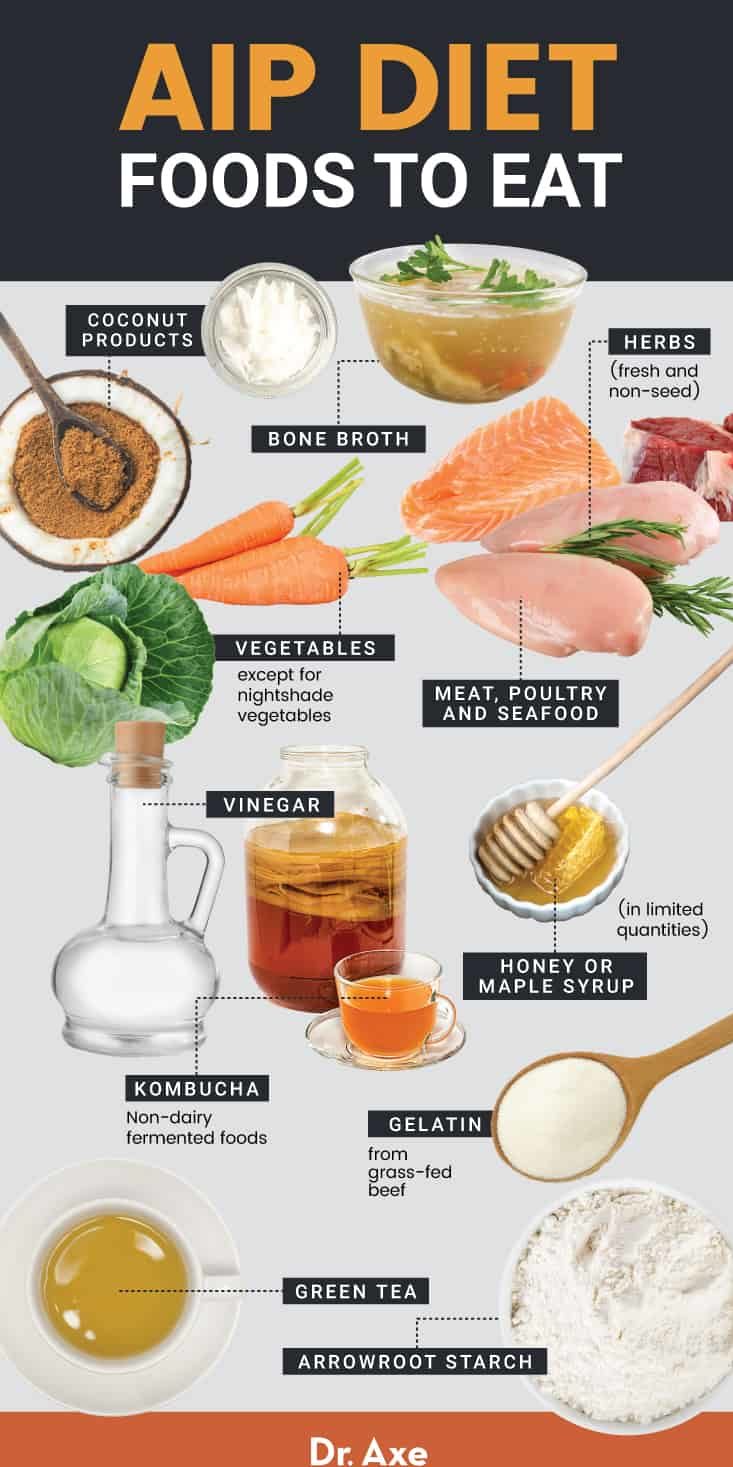This Dr. Axe content is medically reviewed or fact checked to ensure factually accurate information.
With strict editorial sourcing guidelines, we only link to academic research institutions, reputable media sites and, when research is available, medically peer-reviewed studies. Note that the numbers in parentheses (1, 2, etc.) are clickable links to these studies.
The information in our articles is NOT intended to replace a one-on-one relationship with a qualified health care professional and is not intended as medical advice.
This article is based on scientific evidence, written by experts and fact checked by our trained editorial staff. Note that the numbers in parentheses (1, 2, etc.) are clickable links to medically peer-reviewed studies.
Our team includes licensed nutritionists and dietitians, certified health education specialists, as well as certified strength and conditioning specialists, personal trainers and corrective exercise specialists. Our team aims to be not only thorough with its research, but also objective and unbiased.
The information in our articles is NOT intended to replace a one-on-one relationship with a qualified health care professional and is not intended as medical advice.
AIP Diet: Benefits of the Autoimmune Protocol
August 22, 2018

At just 38 years old, Sandra Dorst was diagnosed with antisynthetase syndrome, a rare autoimmune condition that affects the connective tissue. A few years after her diagnosis, she had made major strides in terms of her health thanks to the help of modern medicine but was still left with debilitating autoimmune disease symptoms like daily joint pain, fatigue and brain fog. When she finally decided to try out the AIP diet, or autoimmune protocol, it made a huge impact on her life.
For those with an autoimmune disease, managing symptoms and getting back to feeling like yourself can be a challenge. Treatments can range from immune-suppressing medications to surgical procedures and long-term lifestyle changes.
For Sandra, a strict autoimmune diet was the only thing that was able to reduce the fatigue and brain fog, giving her control of her life again and giving her husband and children back the wife and mother they used to know.
Less than a year after making the decision to try out the AIP diet, Sandra says that it turned her life around. She even went on to create ShopAIP, a company dedicated to providing AIP-compliant products to help others struggling with similar symptoms achieve the same results that she did.
Although it can be restrictive, complicated and difficult to follow, the AIP diet may be able to manage symptoms and improve quality of life for those with an autoimmune disease.
What Is the AIP Diet?
Autoimmune diseases cause the immune system to attack the healthy cells in your body. Rheumatoid arthritis, lupus and celiac disease are just a few examples of some of the more common autoimmune conditions.
Autoimmune diseases can cause damage to the lining of the small intestines, resulting in increased intestinal permeability, or “leaky gut.” This allows food and waste products to enter the bloodstream, resulting in inflammation.
Certain foods have been shown to increase intestinal permeability and lead to a higher risk of leaky gut. Gluten, for example, is a component of wheat, barley and rye that has been shown to activate a specific protein linked to increased intestinal permeability. (1)
The autoimmune protocol diet, or AIP diet, focuses on healing the gut by eliminating foods that cause inflammation to reduce symptoms in those with an autoimmune disease.
The AIP diet is similar to the Paleo diet plan, as it restricts many of the same foods, such as grains and legumes. It is more restrictive than the Paleo diet, however, and does not allow many of the foods that are commonly consumed on the Paleo diet.
For the first few weeks, the diet should be strictly followed. After this period, you can begin slowly introducing foods back into your diet and monitoring whether they trigger any adverse side effects.
Does It Work?
Food can affect the severity of symptoms for many people with autoimmune conditions. In fact, one 2017 survey showed that 24 percent of participants with rheumatoid arthritis reported that their diets had an impact on symptoms, with certain foods causing them to either improve or worsen. (2)
The AIP diet may not be necessary for everyone, though. For some, lifestyle changes like reducing stress and getting enough sleep can manage symptoms effectively without having to make major dietary changes.
However, if you suffer from an autoimmune disease and find that your symptoms are affected by the foods that you eat, the autoimmune protocol diet could be the key to keeping your symptoms under control and finding which foods trigger symptoms for you.
Not only does this diet cut out the foods that promote inflammation, but it also encourages the consumption of nutrient-dense foods and foods rich in anti-inflammatory omega-3 fatty acids.
AIP Diet vs. Paleo Diet
The AIP diet shares many similarities with the Paleo diet, including many of the foods that are restricted and allowed on each diet. In fact, the AIP diet is sometimes even referred to as the autoimmune Paleo diet. However, there are also some important distinctions between the two diets.
First, however, it’s important to define what is the Paleo diet. Stemming directly from the Paleo definition of “older or ancient,” the Paleo diet is based off of how our ancestors ate during the Paleolithic Age. The diet eliminates all forms of legumes, dairy, soy and grains and focuses primarily on meat, fish, nuts and vegetables.
The autoimmune diet takes it a step further, however, and also eliminates several Paleo diet foods. On the AIP diet, for example, nuts, seeds, eggs and nightshade vegetables are prohibited.
The diets also serve different purposes. While many start a Paleo diet seeking improved health, weight loss and enhanced performance, most start the AIP diet to reduce symptoms and inflammation caused by autoimmune conditions.
Benefits
- Restores Gut Integrity
- Boosts Beneficial Gut Bacteria
- Helps You Learn More About Your Body
- Identifies Foods that Trigger Symptoms
- Rich in Nutrient-Dense, Healthy Foods
- Can Help Reduce Inflammation
- May Decrease Symptoms of Autoimmune Conditions
1. Restores Gut Integrity
First and foremost, the autoimmune inflammatory diet is a healing diet meant to restore the integrity of your gut and reduce inflammation to alleviate symptoms. For those with an autoimmune disease, this can make a world of difference when it comes to improving quality of life.
Leaky gut syndrome is a condition in which toxins and bacteria are able to pass through the walls of the intestine, contributing to symptoms like inflammation, digestive issues and food sensitivities. Studies show that widespread inflammation can increase intestinal permeability, upping the risk of leaky gut syndrome. (3) Because the AIP diet puts the focus on cutting out foods that cause inflammation, it can help restore gut integrity and prevent leaky gut syndrome to keep you feeling your best.
2. Boosts Beneficial Gut Bacteria
Research has found that the diet can have a significant influence on the beneficial bacteria in your gut, which may impact symptom severity for those with an autoimmune disease. (4) The beneficial bacteria in your gut play a central role in just about every aspect of health, from immune function to weight control and beyond. (5, 6) Not only can the AIP diet help relieve symptoms of an autoimmune condition, but it can also promote overall health and wellbeing as well by enhancing the health of your gut microbiome.
3. Helps You Learn More About Your Body
The AIP diet can also help you learn more about your body and understand the ways that your diet can impact your health. It also can help you learn how to follow a nutritious diet in the long term and discover which foods work best for you to meet your nutritional needs and enhance your health.
4. Identifies Foods that Trigger Symptoms
On the same note, the AIP diet can help you figure out which foods may trigger symptoms for you. Although it can be a challenging diet to follow initially, learning which foods you should cut from your diet can be incredibly valuable and can help you understand what may be behind your symptoms. It can also be incredibly beneficial to know which foods can help or hurt your symptoms to make meal-planning even easier in the long run.
5. Rich in Nutrient-Dense, Healthy Foods
The AIP diet prioritizes nutrient-rich, unprocessed and anti-inflammatory foods, such as vegetables. Regardless of whether or not you have an autoimmune disease, we can all benefit from including more of these nutritious foods in our diets. Incorporating more healthy foods in your diet can protect against chronic disease, reduce the risk of nutritional deficiencies and maximize your overall health.
6. Can Help Reduce Inflammation
One of the biggest benefits of the AIP diet is its ability to alleviate inflammation, which is key to reducing symptoms of autoimmune conditions and promoting better health. Eliminating a few specific foods from the diet and filling up on nutrient-dense whole foods instead can have a powerful effect when it comes to inflammation.
This was demonstrated in a recent 2017 study out of California in which 15 people with inflammatory bowel disease followed the AIP diet for 11 weeks, including six weeks of elimination and a five-week maintenance phase. By the end of the study, researchers found that intestinal inflammation had significantly decreased in participants, resulting in improvements in symptoms and overall quality of life. (7a)
7. May Decrease Symptoms of Autoimmune Conditions
Although research is still limited on the ability of this therapeutic diet to treat autoimmune disorders, many people have reported that following the AIP diet has improved the way they feel and decreased common symptoms of autoimmune conditions, such as fatigue, chronic pain and brain fog. Studies have also found that the AIP diet could help improve symptoms of inflammatory bowel disease, a class of autoimmune disorders characterized by inflammation in the digestive tract and symptoms like bloating, abdominal pain and diarrhea. (7b)
Drawbacks
Take a look at the long list of foods to avoid and it becomes clear almost immediately that this diet is extremely restrictive and can be difficult to follow. With rules about everything, from the types of vegetables you can eat to the spices that you should put on your food, adhering to a strict AIP diet is not easy.
Finding foods that are AIP-compliant can also be tedious and time-consuming. Even armed with an autoimmune diet shopping list, trips to the grocery store can require extra time for reading labels to ensure food products are free of prohibited ingredients. Although online resources and stores targeted to the AIP diet are out there, finding food products that are compliant can still be a challenge.
Additionally, food is just one piece of the puzzle. Most autoimmune disorders require medical attention along with other lifestyle changes, like exercise, setting a regular sleep schedule and even moderating sun exposure. While an AIP diet may help you identify which foods trigger symptoms for you and can improve your quality of life, it shouldn’t be treated as a cure-all on its own for your autoimmune disease.
Who Should Follow It?
If you have an autoimmune disease and are generally stable with just a few lingering side effects, an AIP diet might work for you to help find if there are any foods that could be triggering your symptoms. The diet works best when you are mostly stable because it’s much easier to determine how much of an impact the diet may have on your symptoms versus other factors.
However, keep in mind that this diet is highly restrictive and not everyone with an autoimmune condition needs to strictly follow it.
For example, some people may have a reaction to grains but do perfectly fine with other foods like dairy products, legumes and eggs. In that case, simply remove grains from your diet instead of cutting out all of the food groups on the AIP diet.
Furthermore, there can be a lot of factors that could play a role in autoimmune conditions besides food. Stress, sleep patterns, exercise and even hormone levels can all contribute to symptom severity, so most people will need to look beyond the diet and make other healthy lifestyle changes as well.
Guidelines
The AIP diet is a very restrictive diet with a long list of foods to avoid. On this diet, you should eliminate the following foods from your diet:
- Grains
- Legumes, such as beans, lentils and peanuts
- Processed foods
- Seed oils, such as vegetable and canola oil
- Dairy products
- Refined sugars
- Eggs
- Nuts and seeds
- Herbs from seeds, like coriander, cumin and nutmeg
- Coffee
- Chocolate
- Dried fruits
- Emulsifiers, like carrageenan
- Gums
- Nightshade vegetables, such as eggplant, potatoes, tomatoes, peppers and okra
- Alternative sweeteners, like stevia, xylitol and mannitol
- Alcohol

At this point, you may be wondering what can you eat on the autoimmune diet. Although the list of foods to avoid is extensive, there are also many foods that are permitted. On the AIP diet, you should be filling your plates with lots of meats and vegetables. Foods that are allowed on the diet include:
- Vegetables, except for nightshade vegetables
- Meat, poultry and seafood
- Coconut products
- Non-dairy fermented foods, like kombucha
- Honey or maple syrup (in limited quantities)
- Arrowroot starch
- Herbs
- Gelatin from grass-fed beef
- Bone broth
- Herbs (fresh and non-seed)
- Green tea
- Vinegar

Additionally, recommendations regarding fruits vary. While some sources believe that one to two pieces of fresh fruit per day should be permitted, others recommend cutting out fruit from the diet altogether.
The regimen should be followed strictly for the first few weeks, and then foods can be gradually added back in. Try introducing one new food in small amounts every five days, and keep track of any symptoms you may experience.
Recipes
During the first few weeks of this diet, finding a compliant AIP diet breakfast, lunch and dinner, as well as AIP diet snacks, can be difficult. However, eating well on this diet doesn’t have to be tedious or challenging. Here are a few simple recipes to get you started:
- Turkey Apple Breakfast Hash
- Balsamic Chicken Veggie Bowl
- Maple Bacon Brussels Sprouts
- Feel Good Soup
- Turmeric Broccoli Chicken Roll Ups
History
The AIP diet can be traced back to scientist Dr. Loren Cordain, who noted that many foods allowed on the Paleo diet — such as nuts, seeds, dairy products, eggs and nightshade vegetables — could trigger symptoms in those with an autoimmune disease.
In 2010, former research biochemist and health expert Robb Wolf wrote about the AIP diet in his book, “The Paleo Solution,” in which he framed it as a 30-day diet where certain foods are eliminated and then slowly reintroduced back into the diet to assess tolerance.
Shortly after, Dr. Sarah Ballantyne began writing about the AIP diet on her website, The Paleo Mom. Today, she is considered one of the leading experts on the autoimmune protocol as well as the intricate link between autoimmunity and diet.
Risks and Side Effects
Keep in mind that the AIP diet should be used as a tool to understand which foods may trigger symptoms for you, but it doesn’t mean that you need to eliminate all foods on the diet permanently. In fact, there are many foods restricted on the diet that can provide important nutrients and can be healthy dietary additions, as long as they don’t cause any negative symptoms.
Additionally, remember that there is no single best lifestyle and diet for autoimmune disease. Certain factors may affect people differently, but the purpose of this diet is to gain an understanding of how specific types of foods may affect you and your symptoms.
If you have tried the AIP diet and are still experiencing negative side effects like fatigue, joint pain or swelling, talk to your doctor and see if there may be other lifestyle changes that you should consider to improve symptom severity.
Final Thoughts
- The AIP diet is an elimination diet designed to reduce symptom severity in those with an autoimmune disease.
- The first phase of the diet restricts many types of foods that can cause inflammation and leaky gut. Foods are then slowly reintroduced and assessed for tolerance.
- The AIP diet is a stricter form of the Paleo diet, and many foods that are allowed on the Paleo diet are eliminated on the AIP diet, such as nuts, seeds, eggs and dairy products.
- Although this diet may be able to help relieve symptoms for those with an autoimmune condition, it should be paired with other healthy lifestyle changes to achieve optimal results.










